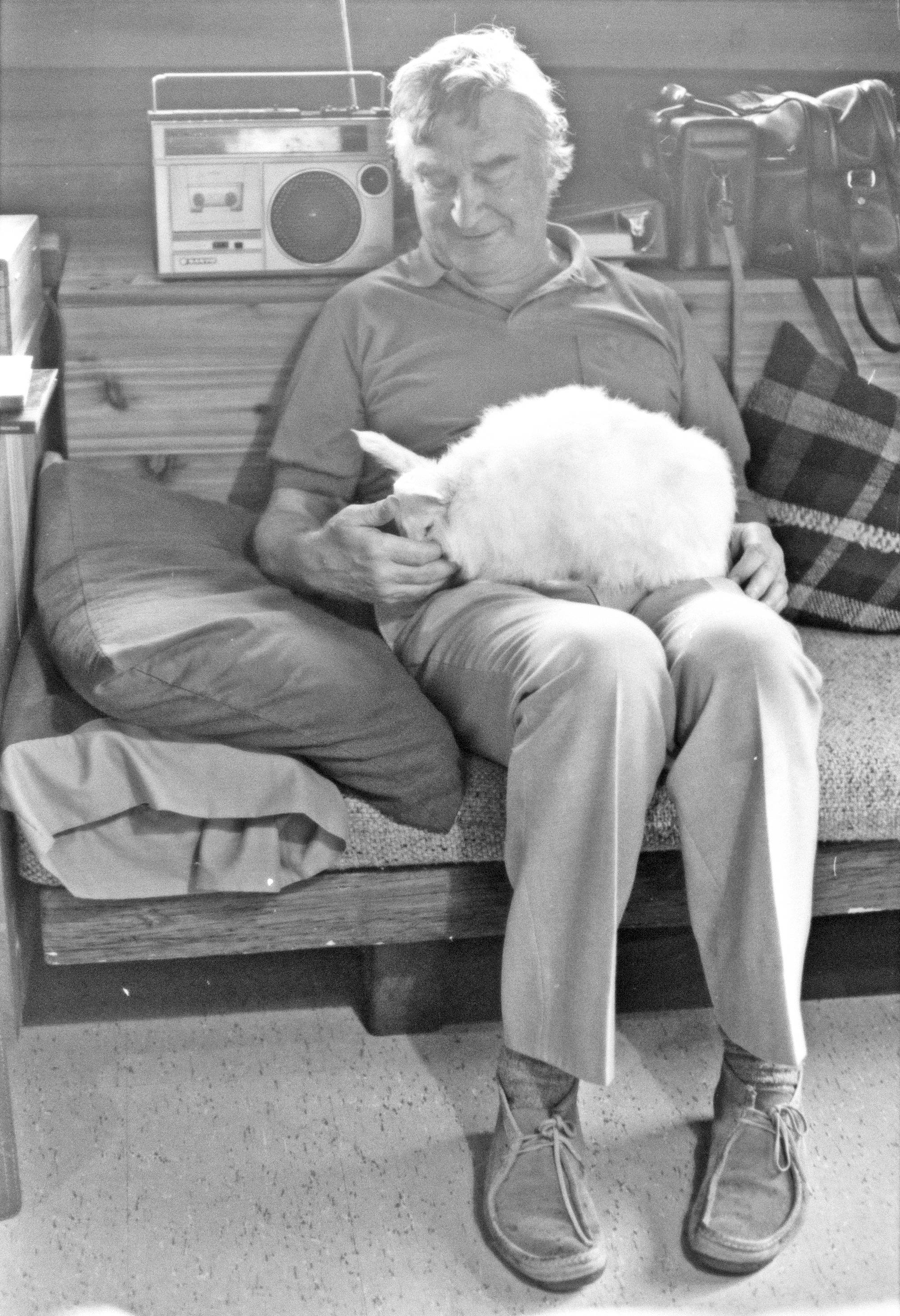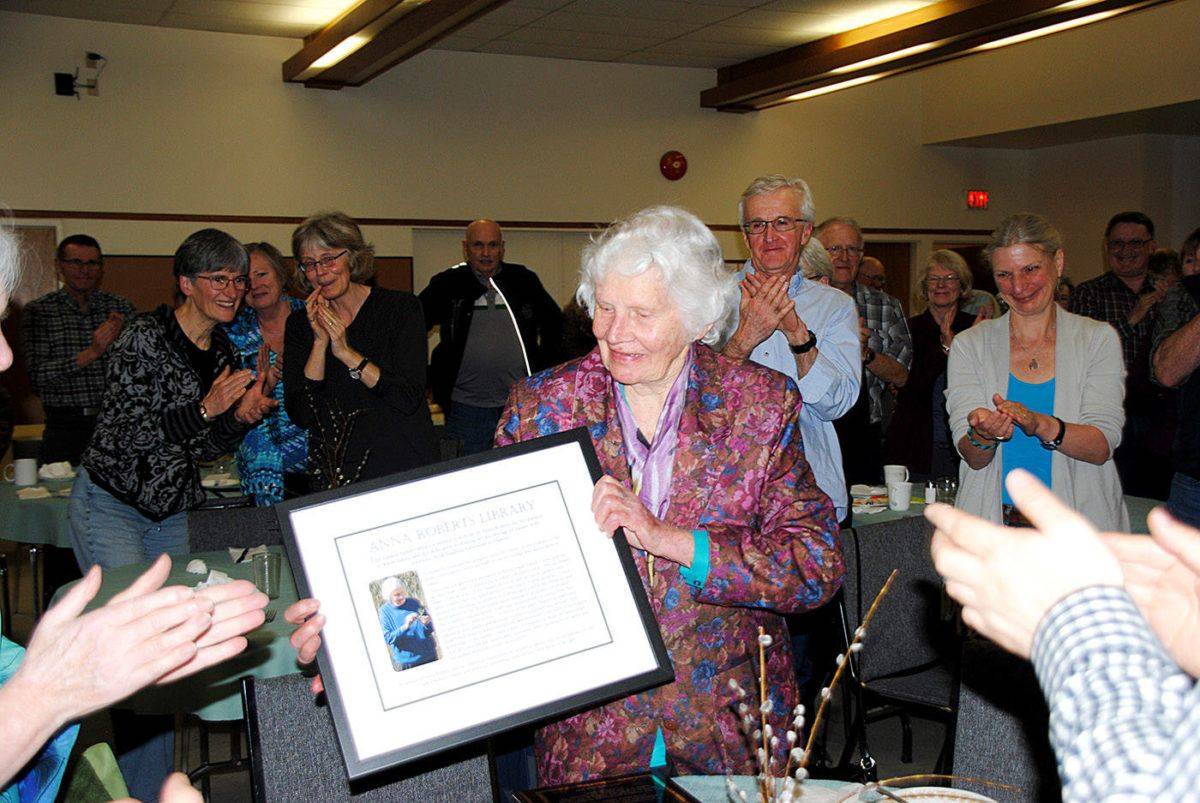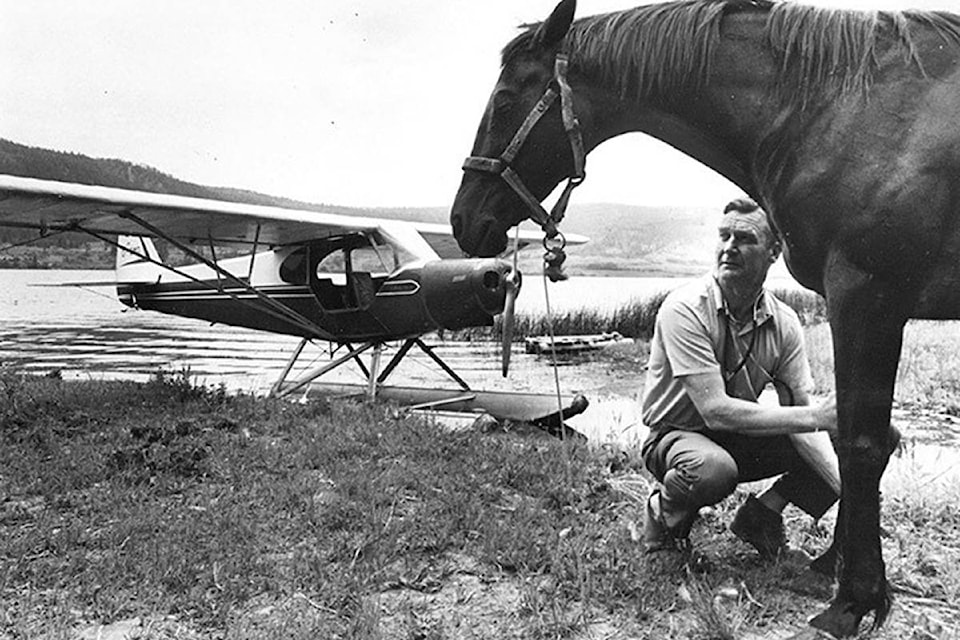Amy Bebawi
Special to the Tribune
In today’s day and age, part of success is defined as receiving recognition for what you have chosen to do with your life, whether that is being involved in your community, excelling in your field of work, or overcoming a difficult hardship.
However, rarely do you find a person who has spent their life doing many a remarkable thing, not for the recognition, but simply out of their desire to bring some goodness into this world and live well.
A perfect example of such a remarkable person is the late Dr. John Roberts; he was a person that provided the world with a refreshing ray of hope.
John was a man of honour and selflessness that played a vital role in making Williams Lake what it is today and is someone that deserves a much bigger spotlight. Dr. Roberts was born near Melbourne, Australia in 1922.
During the Second World War, he joined the Royal Australian Air Force where he learned to fly a variety of different planes.
In 1952, a few years after he came home from the war, he moved to Canada and went to school in Ontario to become a veterinarian. A week after graduating, he married a biologist named Anna Brown.
After they got married, John and Anna decided to take a trip and drive to B.C. On that trip, John’s dear Anna insisted on looking at some birds in the Cariboo.
READ MORE: Dr. John Roberts shares wealth of historical data
That bird watching visit became a pivotal turning point of the couple’s future.
During their trip, they heard that there was no resident veterinary clinic anywhere between Kamloops and Alaska, and the couple showcased their thoughtful selflessness and decided to move to Williams Lake and start a clinic in this area that they had already started to fall in love with.
And so, a mere chance began the remarkable journey of Dr. John Roberts in the Cariboo.
When Dr. Roberts and Anna made their move to Williams Lake, they rented out a couple of rooms to live in and start their vet business. Dr. Roberts simultaneously built a house across the lake where they would raise their two daughters, Naomi and Gina, and son Kim. Whenever there would be a customer while Dr. Roberts was out working on the house, Anna would wave a white sheet from across the lake, and Dr. Roberts would paddle back to help the customer.
Once they moved, John got a contract vaccinating cattle all over the Cariboo. He very quickly experienced firsthand how big and spread out of an area it was, and how difficult it was to get around, especially in the winter.
With that difficulty and his past experience as a pilot in mind, Dr. Roberts decided to buy an airplane. It proved to be a wise investment, as it helped him get to more ranches in less time and allowed him to travel around the Cariboo during the winter months.
During his time as a vet, Dr. Roberts clearly revealed himself to be a man with a serving heart that deeply cared for people.
One perfect example of this is narrated in one of his letters to his extended family that was later published. During the winter of 1958, Dr. Roberts took a trip west with his airplane to vaccinate cattle at many different ranches.
He toured all around the area, including Kleena Kleene, Nimpo Lake, and Anahim, and stopped at numerous ranches, many of which were quite small.
It may seem like he was just doing his job as the vet in town, but in his letter he explained that the cost for the amount of travelling it took to reach all the ranches on that trip, while only vaccinating a small number of cattle, made it so that he did not gain a great deal of profit. It was also the roughest of his trips in the area.
Nevertheless, he went on to recount his joy of meeting, working with, and helping “some of the finest, most genuine gentle people.”
The true joy of those trips for Dr. Roberts was the people. He was more than willing to let go of a larger profit and instead see the value of his work in helping and spending time with people.
The people of the Cariboo had a special place in Dr. Roberts’ heart, and he loved to listen to each family’s stories.
Numerous families were descendants of the Cariboo pioneers, and many times, they would show him or even give him some of their family’s old documents and photos. His growing interest in the Cariboo’s history led him to record the stories of all the different people he met on the job, and through the years, his collection of all of the stories, pictures, documents, and objects ended up providing him with an entire archival collection of his own.
Dr. Roberts also brought his camera along while on his trips. As an avid photographer, he accumulated a large collection of photos from all the different ranches. He continued his photography hobby even after his time vaccinating cattle, and throughout his life he took pictures of many different people, places, and events around the Cariboo.
One of his collections is simply pictures of many of the buildings and streets all over Williams Lake. His immense photo collection has left the Cariboo with some unbelievably valuable documentation of its great past.
In 1977 he retired from vaccinating and accepted a job as the town’s coroner. He spent the next 10 years investigating suspicious deaths in the area. Many people still brought hurting animals to his doorstep, and despite not being the official town vet, he was kind enough to cure and nurture them.
Once he retired from being a coroner, he put his energy into pursuing his passion for Cariboo history and photography. He began to investigate the history of the area and people more, and thoroughly develop his archival collection.
These investigations even took him on two trips to England to research more information and cross check his facts.
John ended up writing several books using the abundant wealth of information he had gathered over the years. One of his lengthier books Cariboo: An Historical Narrative, he personally sold from his own home. He numbered each book (he only sold about 100 copies for $50 each) and made note of which book each person purchased and took down their phone numbers. He would then get in contact with them and ask why they purchased the book out of fascination and curiosity, but also with the hope that their interest meant that they had their own Cariboo history stories that John could learn more from.
READ MORE: Lakecity historian and veterinarian turns 90
With his vast amount of knowledge, photographs, documents, and resources, John headed up the new archival collection at the library, a project that he began to invest in in 1975. Much of the library’s archives was originally composed with the use of his own collection. He would make copies of his own photos and documents to be accessible to the public upon request.
He also had the intention of donating his large collection to the library in later years.
Dr. John Roberts was a man of many interest, talents and sacrifices. He made an immense impact on the community in numerous ways, only one of which would have been enough to grant him recognition. He made the sacrifice to move across the country to become the only vet from Kamloops to Alaska, and he was greatly invested in the history of this area, a place he was not originally from.
Here at the museum, it is easy to recognize his fingerprint in this area’s history. Copies and donations of his photos, documents, letters, and books have been greatly beneficial in offering a deeper lens into the stories of the people of this area that would have never been discovered otherwise. His work provides a key to understanding the past of Williams Lake and why it is the way it is today.
Amy Bebawi is a summer student at the Museum of the Cariboo Chilcotin.


